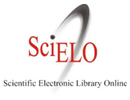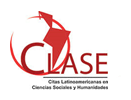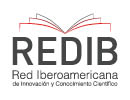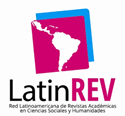Archaeological discourses and their consequences: an approximation through the Peruvian case
DOI:
https://doi.org/10.21142/DES-1303-2021-0027Keywords:
Archaeology, nationalism, state, colonialism, educationAbstract
In the present article it will be discussed how archaeo logy has been shaping the discourses about human past, going from ideas that simplified cultural development to allowing an understanding of the diversity of cultural processes in the world. However, the archaeological discourses that had their origins in colonialism and racism still perdure today. In Peru, these discourses have as its most important representative the nationalist idea of a «mother civilization» or «mother culture», which has as a consequence the overvaluation of the monumentality of archaeological sites. In this way, it will be explained how notions surged from coloniality create value scales about archaeological sites and the past in itself. Finally, it will be seen how these ideas are still perpetuated by the Peruvian state through school textbooks.
Downloads
References
Anderson, B. (2006). Imagined communities. Reflections on the origin and spread of nationalism. Verso.
Arnold, B. (1990). The past as propaganda: totalitarian archaeology in Nazi Germany. Antiquity, 64, 464-478.
Arnold, B. (1992). The past as propaganda: How Hitler’s archaeologists dis torted European prehistory to justify racist and territorial goals. Archaeo logy, 45(4), 30-37.
Arnold, B. (2006). ‘Arierdämmerung’: race and archaeology in Nazi Ger many. World Archaeology, 38(1), 8-31.
Asensio, R. (2018). Señores del pasado. Arqueólogos, museos y huaqueros en el Perú. Instituto de Estudios Peruanos.
Bischof, H. (1998). Los orígenes de la civilización centroandina en la obra de Max Uhle. Indiana, 15, 37-78.
Curtoni, R. y Politis, G. (2006). Race and racism in South American archaeo logy. World Archaeology, 38(1), 93-108.
Endere, M. (2000). Patrimonios en disputa: acervos nacionales, investiga ción arqueológica y reclamos étnicos sobre restos humanos. Trabajos de Prehistoria, 57(1), 5-17.
García, P. (2017a). From folk history to empathy: contesting heritage values in Chinchero, Peru. International Journal of Heritage Studies, 23(4), 335-346.
García, P. (2017b). Ruins in the landscape: Tourism and the archaeological heritage of Chinchero. Journal of Material Culture, 22(3), 317-333.
Gellner, E. (1983). Nations and Nationalism. Basil Blackwell.
Gänger, S. (2006). ¿La mirada imperialista? Los alemanes y la arqueología peruana. Histórica, 30(2), 69-90.
Gänger, S. (2008). ¿Cómo escribir la historia de la arqueología en el Perú? Respuesta a las «Observaciones» de Peter Kaulicke acerca de «¿La mirada imperialista?». Histórica, 32(2), 181-194.
Hardy, S. (2017). The archaeological profession and human rights. En G. Moshenska (Ed.), Key concepts in public archaeology (pp. 93-106). UCL Press.
Hayes, K. y Cipolla, C. (2015). Introduction: Re-imagining colonial pasts, influencing colonial futures. En C. Cipolla y K. Howlett-Hayes (Eds.), Rethin king colonialism: Comparative archaeological
Henson, D. (2017). Archaeology and education. En G. Moshenska (Ed.), Key concepts in public archaeology (pp. 43-59). University College London Press.
Herrera, A. (2011). Indigenous Archaeology... in Peru? En C. Gnecco y P. Ayala (Eds.), Indigenous peoples and archaeology in Latin America (pp. 67- 87). Left Coast Press.
Herrera, A. y Lane, K. (2006). «¿Qué hacen aquí esos pishtakus?»: Sueños, ofrendas y la construcción del pasado. Antípoda, 2, 157-177.
Hobsbawn, E. y Ranger, T. (Eds.) (2013). The invention of tradition. Cambrid ge University Press.
Kláren, P. (2004). Nación y sociedad en la historia del Perú. Instituto de Estu dios Peruanos.
Kohl, P. (1998). Nationalism and archaeology: On the constructions of na tions and the reconstructions of the remote past. Annual Review of Anthro pology, 27, 223-246.
Lowenthal, D. (1994). Conclusions: archaeologists and the others. En P. Gathercole y D. Lowenthal (Eds.), The politics of the past (pp. 302-314). Routledge.
Lumbreras, L. (1988). De los orígenes de la civilización en el Perú. Peisa.
Maldonado, N. (2008). La descolonización y el giro des-colonial. Tabula Rasa, 9, 61-72.
Méndez, C. (1995). Incas sí, indios no: apuntes para el estudio del nacionalis mo criollo en el Perú. Documentos de Trabajo N.° 56, Instituto de Estudios Peruanos.
Mignolo, W. (2009). La colonialidad: La cara oculta de la modernidad. En S. Breitweiser, C. Klinger y W. Mignolo (Eds.), Modernologías. Artistas con temporáneos investigan la modernidad y el modernismo (pp. 39-49). Macba.
Ministerio de Educación. (2018). Territorio y cultura: Primer grado. Ciclo avanzado. Unidad 3. Ministerio de Educación.
Montoya, P. (2008). Estados sin nación. El discurso nacionalista y el evolu cionismo andino, 1890-1930. Memoria y Sociedad, 12(24), 97-113.
Oland, M. (2012). Public and postcolonial practices in Latin American Ar chaeology: Engaging with non-descendant communities in Northern Be lize. Chungará, 44(3), 467-474.
Orser, C. (2012). An archaeology of eurocentrism. American Antiquity, 77(4), 737-755.
Poirier, M. (2019). Archaeology and education: Learning about the past in Chavín de Huántar, Perú. [Tesis doctoral, Purdue University].
Quijano, A. (2000). Colonialidad del poder y clasificación social. Journal of World-Systems Research, 6(2), 342-386.
Quijano, A. (2005). El laberinto de América Latina: ¿hay otras salidas? Inves- tigaciones Sociales, 9(14), 155-178.
Quijano, A. (2014). «Bien vivir»: entre el «desarrollo» y la des/colonialidad del poder. En A. Quijano (Ed.), Des/colonialidad y bien vivir. Un nuevo deba- te en América Latina (pp. 19-33). Editorial Universitaria de la Universidad Ricardo Palma Editorial Universitaria, Cátedra América Latina y la Colonia- lidad el Poder.
Renfrew, C. y Bahn, P. (2016). Archaeology: Theories, methods and practices. Thames & Hudson Ltd.
Segato, R. (2013). La crítica de la colonialidad en ocho ensayos y una antro- pología por demanda. Prometeo Libros.
Shady, R. (2002). Caral, Supe: La civilización más antigua de América. Inves- tigaciones Sociales, 6(9), 51-81.
Shady, R. (2006). La civilización Caral: sistema social y manejo del territorio y sus recursos. Su trascendencia en el proceso cultural andino. Boletín de Arqueología PUCP, 10, 59-89.
Shady, R. (2010). La ciudad sagrada de Caral: Significado y trascendencia. S. d.
Shady, R., Haas, J. y Creamer, W. (2001). Dating Caral, a Preceramic site in the Supe Valley on the Central Coast of Peru. Science, 292(5517), 723-726.
Shady, R., Cáceda, D., Crispín, A., Machacuay, M., Novoa, P. y Quispe, E. (2009). Caral. La civilización más antigua de América. 15 años develando su historia. Instituto Nacional de Cultura.
Shady, R., Novoa, P. y Quispe, E. (2018). Los valores de la civilización Caral: Reflexiones para el «Buen Vivir». Ministerio de Cultura.
Shanks, M. y Tilley, C. (1992). Re-constructing archaeology: Theory and prac- tice. Routledge.
Silverman, H. (2002). Touring ancient times: The present and presented past in contemporary Peru. American Anthropologist, 104(3), 881-902.
Silverman, H. (2005). Embodied heritage, identity politics, and tourism.
Anthropology and Humanism, 30(2), 141-155.
Silverman, H. (2015). Branding Peru: Cultural heritage and popular cultu- re in the marketing strategy of PromPerú. En M. Robinson y H. Silverman (Eds.), Encounters with popular pasts: Cultural heritage and popular culture (pp. 131-148). Springer.
Silverman, H. y Fairchild Ruggles, D. (2007). Cultural heritage and human rights. En H. Silverman y D. Fairchild Ruggles (Eds.), Cultural heritage and human rights (pp. 3-22). Springer.
Smardz Frost, K. (2004) Archaeology and public education in North Ame- rica: view from the beginning of the millennium. En N. Merriman (Ed.), Pu- blic Archaeology (pp. 59-84). Routledge.
Smith, L. (2004). Archaeological theory and the politics of cultural heritage. Routledge.
Smith, L. (2007). Empty gestures? Heritage and the politics of recognition. En H. Silverman y D. Fairchild Ruggles (Eds.), Cultural heritage and human rights (pp. 159-171). Springer.
Sommer, U. (2017). Archaeology and nationalism. En G. Moshenska (Ed.), Key concepts in public archaeology (pp. 166-186). University College Lon- don Press.
Stone, P. y MacKenzie, R. (Eds.) (1990). The excluded past: Archaeology in Education. Routledge.
Stone, P. y Molyneaux, B. (Eds.) (1994). The presented past: Heritage, mu- seums and education. Routledge, English Heritage.
Strong, W. (1925). The Uhle Pottery Collections from Ancón. Publications in American Archaeology and Anthropology, 21, 4, University of California Press.
Tantaleán, H. (2008). Las miradas andinas: arqueologías y nacionalismos en el Perú del siglo XX. Arqueología Suramericana 4(1), 34-52.
Tantaleán, H. (2010). El pasado tras el espejo: arqueología y nacionalismo en el Perú. En J. Nastri y L. Menezes Ferreira (Eds.), Historias de Arqueología Sudamericana (pp. 137-166). Fundación de Historia Natural Félix de Azara.
Tantaleán, H. (2011). Chavín de Huántar y la definición arqueológica de un Estado teocrático andino. Arqueología y Sociedad, 23, 47-92.
Tantaleán, H. y Aguilar, M. (2014). Estado, patrimonio cultural y comuni- dades indígenas: Machu Picchu y la historia de un diálogo asimétrico. En
M. Rivolta, M. Montenegro y L. Menezes Ferreira (Eds.), Multivocalidad y activaciones patrimoniales en arqueología: perspectivas desde Sudamérica (pp. 229-256). Fundación de Historia Natural Félix de Azara.
Tantaleán, H. (2017). ¿Por qué es necesario una arqueología indígena en el Perú? Revista Argumentos, 11(3), 42-51.
Tello, J. (1923). Wira-Kocha. Reimpreso de la revista Inca, 1(1 y 3).
Tello, J. (1942). Origen y desarrollo de las civilizaciones prehistóricas andinas. Librería e Imprenta Gil.
Trigger, B. (2003). Understanding early civilizations: a comparative study. Cambridge University Press.
Uhle, M. (1915). Las estupendas ruinas de Moche y Chan Chan. Traducción realizada por Horacio Urteaga del artículo publicado en Journal de la So- ciété des Américanistes de Paris, 10(1), 56-71.
Uhle, M. (1974[1917]). Los aborígenes de Arica y el hombre americano.
Chungará, 3, 13-21.
Van den Berghe, P. y Flores Ochoa, J. (2000). Tourism and nativistic ideolo- gy in Cuzco, Peru. Annals of Tourism Research, 27(1), 7-26.
Wallerstein, I. (2001). El eurocentrismo y sus avatares: los dilemas de las ciencias sociales. Revista de Sociología, 15, 27-39.
Downloads
Published
Issue
Section
License

Esta obra está bajo una licencia http://creativecommons.org/licenses/by-nc-sa/4.0/



















